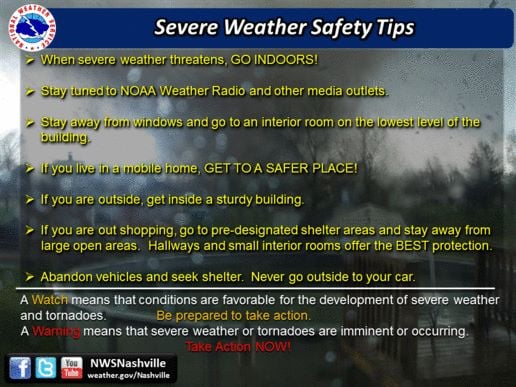Protecting Yourself From Fast-Moving Storms With Damaging Winds

Table of Contents
Understanding the Threat of Fast-Moving Storms and Damaging Winds
Fast-moving storms, including hurricanes, tornadoes, and severe thunderstorms, pose significant risks due to their unpredictable nature and intensely damaging winds. Understanding these threats is the first step towards effective protection.
Identifying High-Risk Areas
Certain geographical locations are more susceptible to fast-moving storms and damaging winds. Coastal regions are frequently targeted by hurricanes, while the Great Plains are notorious for tornadoes. Areas with flat terrain are also at increased risk because damaging winds have less to impede them. Knowing your area's vulnerability is crucial in planning your storm safety strategy. Check with your local authorities or National Weather Service for specific risk assessments in your region.
Recognizing Warning Signs
Recognizing the warning signs of an approaching fast-moving storm is paramount. Pay close attention to official weather alerts issued by your national meteorological service (like the NOAA in the US). Other indicators include:
- Darkening skies: A sudden and dramatic darkening of the sky can signal an approaching storm system.
- Sudden wind shifts: A noticeable change in wind direction and speed, often accompanied by an increase in intensity, is a key warning sign.
- Unusual cloud formations: Look for ominous cloud formations like wall clouds (associated with tornadoes) or the characteristic eye of a hurricane.
- Hail: The appearance of hail often precedes severe thunderstorms with damaging winds.
- Understanding different weather alert systems: Familiarize yourself with the difference between a watch (conditions are favorable for a storm) and a warning (a storm is imminent).
Reliable weather sources are essential. Utilize reputable weather apps and websites, such as those provided by your national meteorological service (e.g., NOAA's website).
Preparing Your Home for Damaging Winds
Preparing your home is crucial in mitigating the impact of damaging winds. Proactive measures can significantly reduce the risk of damage and injury.
Securing Your Property
Before a storm hits, take steps to secure your property's exterior:
- Secure loose objects: Bring inside or securely fasten anything that could become airborne—patio furniture, garbage cans, loose debris, etc.
- Trim trees and shrubs: Remove any dead or weakened branches that could fall and damage your home. Keep trees trimmed away from power lines.
- Board windows: Cover windows with plywood or storm shutters to prevent shattering. Use strong tape to reinforce windows if boarding is impossible.
- Reinforce garage doors: Garage doors are often a weak point. Consider reinforcing them with braces or purchasing stronger, storm-resistant doors.
Creating a Safe Room
Designate a safe room within your home—ideally an interior room on the lowest level, away from windows. Stock this room with essential supplies:
- Water: A minimum of one gallon per person per day for several days.
- Non-perishable food: Easy-to-prepare, high-energy foods.
- First-aid kit: Include bandages, antiseptic wipes, pain relievers, and any necessary prescription medications.
- Battery-powered radio: Stay updated on weather reports during power outages.
- Flashlights and extra batteries: Essential for navigating in the dark.
- Important documents: Keep copies of insurance policies, identification, and other important papers in a waterproof container.
Protecting Yourself During a Fast-Moving Storm
Once a storm is imminent, your focus shifts to personal safety.
Staying Informed
Continuous monitoring of weather updates is crucial. Keep your battery-powered radio on, and check reputable weather sources regularly. If power goes out, consider alternative communication methods such as a CB radio.
Evacuation Procedures
If you are ordered to evacuate, follow your local authorities' instructions immediately. Familiarize yourself with evacuation routes and designated shelters beforehand.
Seeking Shelter
If evacuation isn't possible, seek shelter in your designated safe room. Stay away from windows, and cover yourself with blankets or mattresses for added protection.
- Stay away from windows: Flying debris poses a significant threat.
- Cover yourself: Protect yourself from falling debris.
- Interior rooms: Interior rooms on the lowest level are typically safest.
- Basements: If available, a basement offers the best protection.
Post-Storm Safety and Recovery
After the storm has passed, safety remains paramount.
Assessing Damage Safely
Before entering your home, check for structural damage and downed power lines. Do not enter if there is significant damage; wait for professional assessment.
Reporting Damage
Contact your insurance company to report damages promptly. Also, report damage to local authorities to help with recovery efforts. Take photos and videos of the damage as documentation.
Dealing with Debris
Cleaning up debris can be dangerous. Wear protective gear (gloves, sturdy shoes, eye protection) and be cautious of sharp objects, broken glass, and potential hazards.
Conclusion
Protecting yourself from fast-moving storms with damaging winds requires proactive planning and quick action. By understanding the threats, preparing your home, and taking appropriate safety measures during and after the storm, you can significantly reduce the risk to yourself and your family. Develop your own fast-moving storm safety plan today, and regularly review and update it. Protect your family from damaging winds by utilizing resources from the NOAA and FEMA to enhance your preparedness. Remember, preparation is key to staying safe during fast-moving storms. Don't wait—create your storm safety plan now!

Featured Posts
-
 The Rich Flavors Of C Cassis Blackcurrant Liqueur
May 21, 2025
The Rich Flavors Of C Cassis Blackcurrant Liqueur
May 21, 2025 -
 Open Ai Facing Ftc Investigation Concerns And Potential Outcomes
May 21, 2025
Open Ai Facing Ftc Investigation Concerns And Potential Outcomes
May 21, 2025 -
 19 Indian Paddlers Make History At Wtt Star Contender Chennai
May 21, 2025
19 Indian Paddlers Make History At Wtt Star Contender Chennai
May 21, 2025 -
 Union Challenges Amazon Warehouse Closures Before Quebec Labour Tribunal
May 21, 2025
Union Challenges Amazon Warehouse Closures Before Quebec Labour Tribunal
May 21, 2025 -
 Arda Gueler Ve Real Madrid In Yeni Teknik Direktoerue Birlikte Basari Mi
May 21, 2025
Arda Gueler Ve Real Madrid In Yeni Teknik Direktoerue Birlikte Basari Mi
May 21, 2025
Latest Posts
-
 Honeywells 2 4 Billion Acquisition Of Johnson Mattheys Catalyst Unit A Deep Dive
May 23, 2025
Honeywells 2 4 Billion Acquisition Of Johnson Mattheys Catalyst Unit A Deep Dive
May 23, 2025 -
 Honeywells Acquisition Of Johnson Mattheys Catalyst Technologies Boosting Its Process Technology Capabilities
May 23, 2025
Honeywells Acquisition Of Johnson Mattheys Catalyst Technologies Boosting Its Process Technology Capabilities
May 23, 2025 -
 Reaching 100 Test Wickets The Challenges Facing Zimbabwes Muzarabani
May 23, 2025
Reaching 100 Test Wickets The Challenges Facing Zimbabwes Muzarabani
May 23, 2025 -
 100 Test Wickets Blessing Muzarabanis Road To A Significant Achievement
May 23, 2025
100 Test Wickets Blessing Muzarabanis Road To A Significant Achievement
May 23, 2025 -
 Zimbabwe Test England Hit By Fresh Injury Concerns
May 23, 2025
Zimbabwe Test England Hit By Fresh Injury Concerns
May 23, 2025
